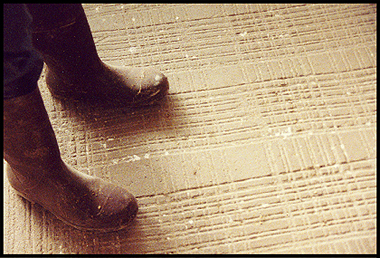
Quiet handling of cattle and pigs is impossible if animals slip or fall during handling. Animals tend to panic if they slip even a little bit. If cattle are constantly agitated while standing in a race, stun box or restraining chute, this is often due to slipping. On ramps and in restraining chutes the cleats must be spaced to fit the stride width of the animal. This prevents the hoof from slipping between the cleats. Cleats must be spaced so that an animal's hoof can fit comfortably between them without slipping. Stairsteps work really well on concrete ramps. For cattle the steps should be 10 cm (3 in) high and 30 cm (12 in) to 45 cm (18 in) long. Each step should have grooves that are 2.5 cm (1 in) deep. The angle of a non-adjustable loading ramp should be 20 degrees or less. If at all possible, ramps should be avoided in pig handling facilities. Pigs are easier to handle on a level surface. Cattle and sheep will go up and down ramps more easily than pigs. Never build the crowd pen which leads up to a single file race (chute) on a ramp. The animals will tend to pile up on the back gate. If a system has to contain a ramp, it will work best if the crowd pen is level and the single file chute is a ramp.

Figure 1. An old slick concrete floor has been re-grooved with a concrete grooving machine. Grooving machines can be rented from a concrete supply company. This floor is suitable for handling pigs and dairy cows. Another good surface is to print the pattern of expanded metal mesh into the wet concrete. Make a stamp out of raised expanded metal mesh with an opening width of 2.5 cm (1 in). Rough broom finishes are not recommended because they wear out too quickly.
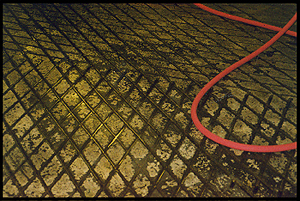
Figure 2. Diamond pattern floor that works well for pigs. The grooves are in a diamond pattern. The diamonds are 10 cm (4 in) by 13 cm (5 in). The grooves are 1 cm (0.5 in) wide by 1 cm (0.5 in) deep.
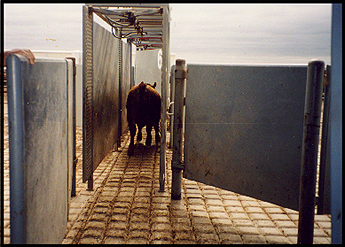
Figure 3. Deep square pattern for handling facilities for beef cattle. The squares are 20 cm (8 in) by 20 cm (8 in). The V shaped grooves are a minimum of 2.5 cm (1 in) deep and 2.5 cm (1 in) wide. The grooves can be made by pressing angle iron into the wet concrete or making a stamp. Pour a practice slab first to learn how to do it. The pattern can not be properly made if the concrete starts to set. Do not use this pattern in dairies. It will be too rough for cattle to walk on every day. It is intended for use in handling facilities such as truck loading ramps, feedlot handling facilities, stockyards, slaughter plants, and other places where cattle occasionally walk. These grooves can also be made in a diamond pattern that will make washing easier. Orient the points of the diamonds towards the drain.
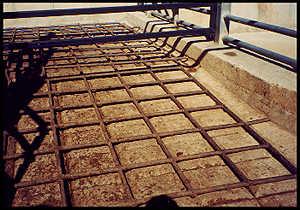
Figure 4. This photo shows a non-slip metal floor grating for use in high traffic areas for beef cattle. It is recommended for cattle scales, stunning boxes, crowd pens and the area in front of a squeeze chute. To prevent damage to the hooves, the bars must be welded so that the grid lies flat. Do not cross the bars on top of each other. Use heavy steel rods. The minimum diameter of the rods is 2.5 cm (1 in). The size of the squares is 30 cm (12 in) by 30 cm (12 in). People often ask why such heavy rods should be used. Thinner rods tend to bend and pull away from the floor. A grating built from heavy rods will lie flat on the floor.
Other methods that can be used to reduce slipping are applying sand on the floor. In the U.S., mats made from woven tire treads can be purchased for use in high traffic areas. Feedlots will often install these mats in front of the squeeze chute. One advantage of these mats is they reduce the chance of hoof damage. The disadvantage of the mats is difficulty with cleaning.
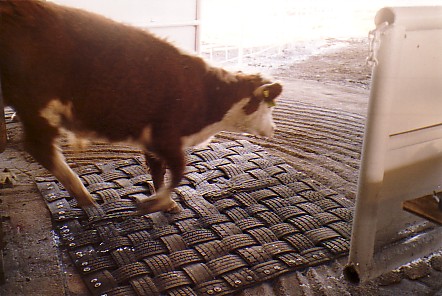
 Click here to return to the Homepage for more information on animal behavior, welfare, and care.
Click here to return to the Homepage for more information on animal behavior, welfare, and care.